The Extreme Fear of Bugs: Symptoms and Treatment Options for Entomophobia
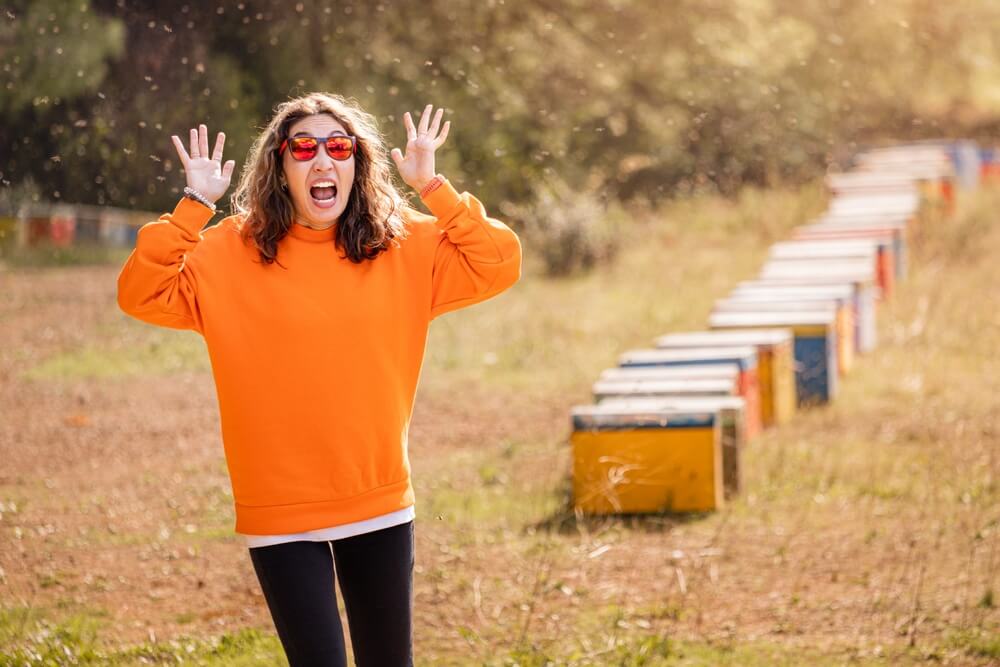
You may not have ever heard the word “entomophobia,” but you’re probably already familiar with the concept. Entomophobia is the technical term for the fear of bugs and insects. The fear of bugs, entomophobia, is also known by other names like “insectophobia” and “acarophobia,” for instance.
Contents:
- What Is Entomophobia?
- How Does Entomophobia Develop?
- Entomophobia Symptoms
- Overcoming Entomophobia
- Helping Kids with Insectophobia
- Therapy for Entomophobia
- Why Killing Insects Isn’t the Answer
- Forming Support Systems for Entomophobia and Other Anxiety Disorders
What Is Entomophobia?

Lena Ogurtsova/Shutterstock.com
As its name implies, entomophobia is a type of phobia. By definition, phobias are common types of anxiety disorders that affect adults and children alike. When you have a phobia of something, you experience extreme fear and anxiety when you’re exposed to it.
In the case of entomophobia, sufferers become very upset and uncomfortable when they’re around insects or even when they just think about bugs. There are many different types of entomophobia, the most common of which is a fear of spiders. Other variants include the fear of flying insects, bees, wasps, ants, and cockroaches, for example.
Entomophobia may present differently for different people. For example, some sufferers fear that bugs will bite them while others fear that their homes will become crawling with insects or that they will catch a deadly disease from a tiny bug. All of these are examples of insectophobia, though they may have slightly different symptoms.
Note also that all of the above fears are perfectly rational in and of themselves. We’ve all likely experienced some of these concerns from time to time. That doesn’t mean we all have insectophobia, though.
What distinguishes normal concerns about bugs from entomophobia is the severity of the fear. Most people are able to experience some discomfort associated with bugs without it interfering with their daily activities. On the other hand, those who suffer from insectophobia alter their plans and behaviors because of the extreme nature of their anxiety around insects.
According to statistics from the National Institute of Mental Health, anywhere between 5 and 12% of Americans suffer from a phobia. This includes between 7 and 9% of children who have a specific phobia like insectophobia.
How Does Entomophobia Develop?
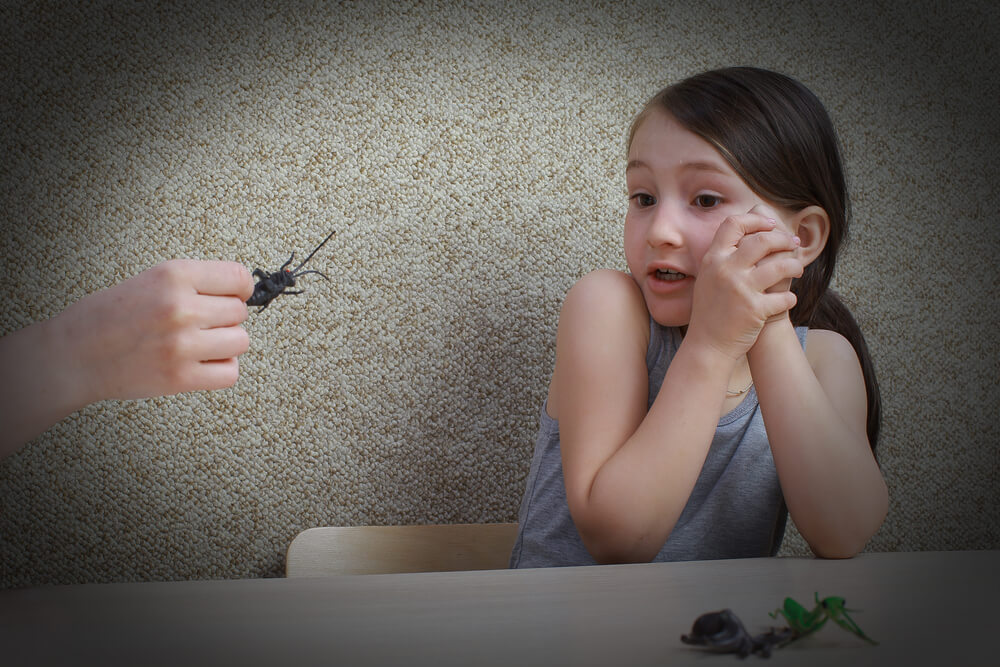
Tatyana Dzemileva/Shutterstock.com
Like other types of phobias, entomophobia can have many different causes. It can develop during childhood, adolescence, or even later in life.
Some people are genetically predisposed to phobias such as entomophobia. This means that if your parents, siblings, or other family members have a fear of insects, you may be prone to developing this specific phobia as well.
In other cases, this phobia develops after a traumatic experience like being bitten by a fire ant or chased by a wasp as a kid. The trauma from this event may follow you into your teens and even adulthood. That’s because your brain has associated insects with pain and suffering.
Entomophobia, like other types of phobias, can also be learned. A child may develop a fear of insects after watching a parent or other role model demonstrate an extreme dislike or fear of bugs. Just as we learn habits from our caregivers, we can also learn fears and anxieties.
Entomophobia Symptoms
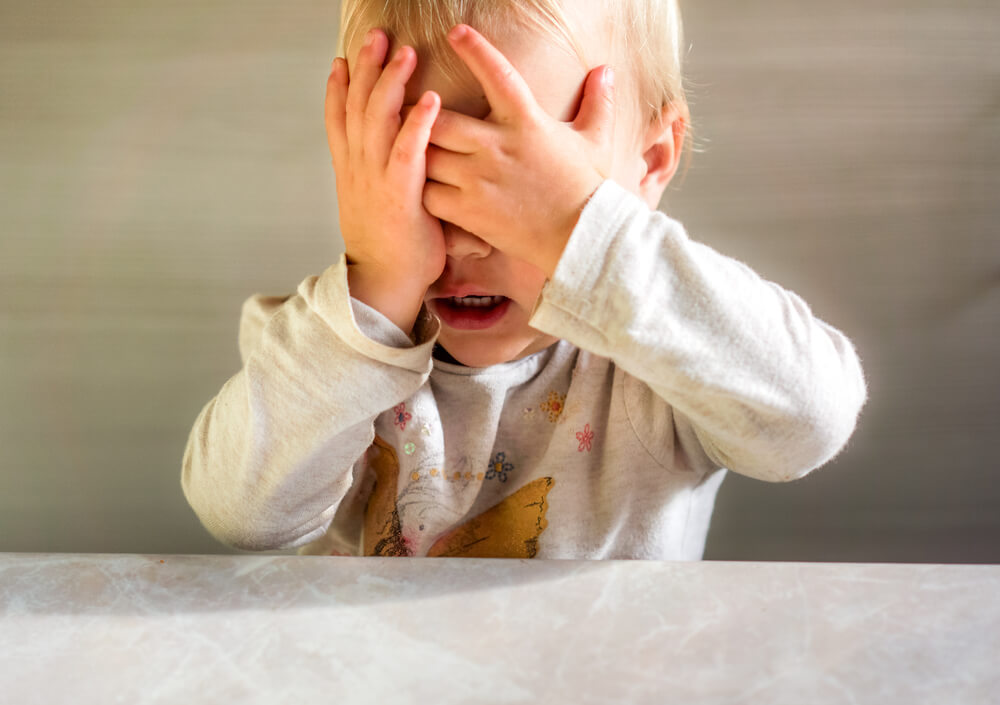
SunnyToys/Shutterstock.com
If you think you or your child may suffer from entomophobia, it can be helpful to learn about some of the specific symptoms of this anxiety disorder. It’s also important to remember that insectophobia is not a mere dislike of insects. Rather, it is an extreme fear that disrupts one’s life.
Here are some symptoms of entomophobia to be aware of.
Avoidance
Most of us try to avoid bugs when we can, but those who suffer from entomophobia take this avoidance to a much higher level. For instance, some children and even adults with this specific phobia refuse to go outside if they think a bug may be somewhere around.
When avoidance behaviors interrupt people’s daily lives, it’s a sign that a phobia has gotten out of control.
If insectophobia is disrupting your hobbies, work, or social life, this is a sign that you may need to take action. For instance, if you’re missing out on family hikes or picnics with friends, it’s time to address the problem.
Severe Anxiety
The most bothersome symptom of entomophobia for sufferers is the severe anxiety that comes with it. These feelings of fear and nervousness can occur when the person thinks about bugs, but it becomes increasingly intense as an insect appears or comes near the sufferer.
Though the result of a mental condition, anxiety surrounding phobias like entomophobia can cause physical symptoms as well. During an anxiety or panic attack, the sufferer may experience rapid heart rate, hyperventilation, sweating, and crying, for instance. Other symptoms can include chest tightening, dry mouth, and trembling.
Loss of Control
One of the most debilitating symptoms of any phobia is the feeling of losing control. With entomophobia, the individual may feel as if he or she can’t control their anxiety or their avoidance behaviors. The sufferer may feel like the phobia is controlling them instead.
For example, someone with insectophobia may know rationally that being stung by an insect isn’t the worst thing that could happen (except in the case of a severe allergy.) Still, the individual may not be able to make themselves go outside during the summer months because of the severe anxiety symptoms associated with entomophobia.
Overcoming Entomophobia
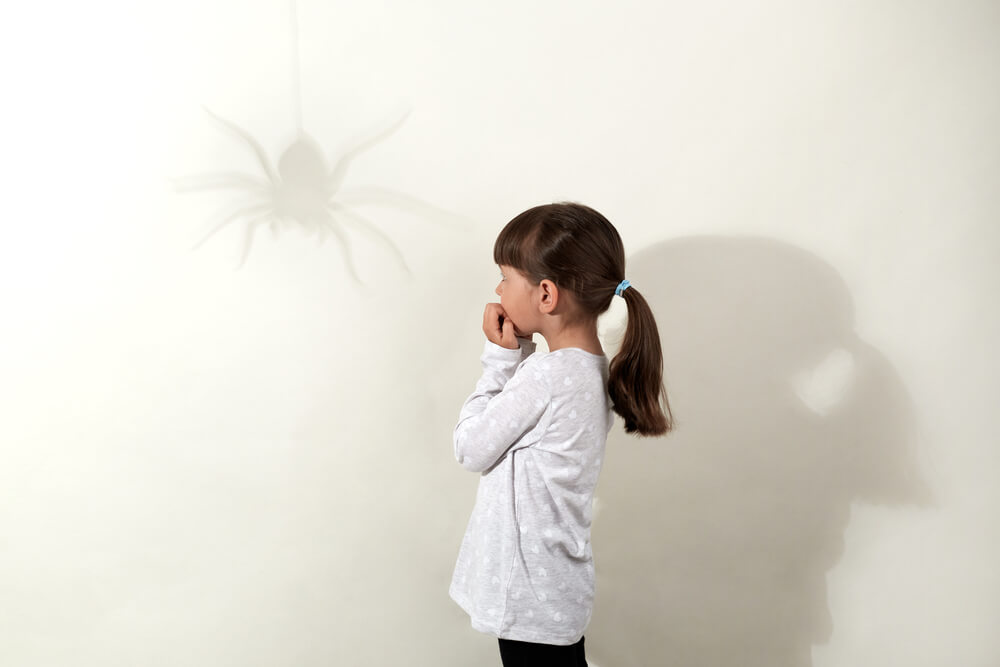
StoryTime Studio/Shutterstock.com
If left untreated, entomophobia can become a serious problem that has negative effects on the sufferer and the family as a whole. Luckily, there are some things you can do to ease this specific phobia and its symptoms. As with anything else, the more informed you are about insectophobia, the more empowered you’ll be to address it.
If you suffer from mild insectophobia, you can manage it just as you would any other anxiety disorder. Certain relaxation techniques such as yoga and mindfulness can ease many of the symptoms of entomophobia. Practicing healthy habits such as exercising on a regular basis and avoiding caffeine and other stimulants may also provide some relief.
Other useful tips:
- Learn as much information as possible about the species that scare you, their habits, and their lifestyle. It is likely that once again faced with a harmless bug, you will be able to pull yourself together and not succumb to panic.
- Try to find at least something pretty in the object of your fear and focus on this: when a bee buzzes nearby, remember that this tiny species is working for our benefit, tirelessly pollinating fruit trees and shrubs.
- If you are going to nature and are afraid of an allergy to insect bites, stock up on antihistamine tablets and ointments, and reliable repellents.
- Try art therapy at home: draw the insect that frightens you in as much detail as possible, and then destroy the drawing.
- Avoid overcompensation of fear: you should not start a giant spider or an ant farm at home if you are not sure that you have finally got rid of the phobia and can safely get along with such “neighbors”.
Helping Kids with Insectophobia

AlexandrMusuc/Shutterstock.com
If it’s your child who suffers from entomophobia, you might feel like there’s nothing you can do. This simply isn’t the case, though. In fact, there are quite a few techniques you can use to help ease your child’s fears.
Acknowledge That the Fear Is Real
If you have a child who is afraid of insects, your first instinct may tell you to downplay the fear. Unfortunately, telling your child that bugs are nothing to be afraid of can actually make matters worse. Instead, validate your child’s feelings by expressing understanding that the fear is very real for them.
You may say something like “I know how much bugs scare you.” This validation can help alleviate other negative feelings your child may be having such as guilt, shame, or alienation. These feelings on top of the phobia itself could prove overwhelming.
Allow for Potential Exposure
Many parents whose children suffer from entomophobia try to help their kids avoid bugs altogether. While well-intentioned, this is another technique that only complicates things further. By enabling avoidance of insects, moms and dads are only reinforcing the fear and giving it even more power over the child.
Parents who shield their children from any potential exposure to insects are doing more harm than good. Eventually, the child will have to figure out how to coexist with bugs, and the parents won’t always be there to help. Moms and dads need to give their kids the opportunity to manage their fears independently.
Of course, allowing for exposure doesn’t mean intentionally creating situations where your child will have to deal with bugs. It just means going about normal life without interfering. For instance, don’t make a separate place for your child to eat inside when the family is enjoying dinner on the patio.
Be a Good Role Model
You may not share your child’s fear of bugs, but we all have anxieties. By practicing healthy coping skills, you will show your child that phobias don’t have to rule their life.
Many parents struggle to be vulnerable with their children. You should know, though, that it’s ok to be human in front of your kids. In fact, it will reassure them that you have more in common with them than they might have thought otherwise.
Be vocal about the specific fears you deal with, and talk to your child about how you face them. Whether it’s a fear of flying or driving anxiety, discuss it with your son and daughter and tell them how you handle these negative feelings. You can be your child’s role model and inspiration as they overcome their own fears!
Other useful tips:
- Purchase colorfully illustrated encyclopedias about insects: perhaps cognitive interest and curiosity will replace fear.
- Tell your child stories about the life of insects or come up with short stories in which the object of children’s fear will act as a positive character.
- If you see an insect during a walk, explain to your baby that you are ready to protect them and that nothing threatens them next to you
- Do not show negative emotions, even if you yourself are afraid of insects or feel disgusted for them.
- Try to walk in the forest more often and watch insects together. Perhaps your kid will like the idea of getting a magnifying glass and, for example, sketching all the bugs they see with a notebook.
- Make a selection of cartoons for joint viewing, in which insects are depicted as cute and kind creatures.
Therapy for Entomophobia
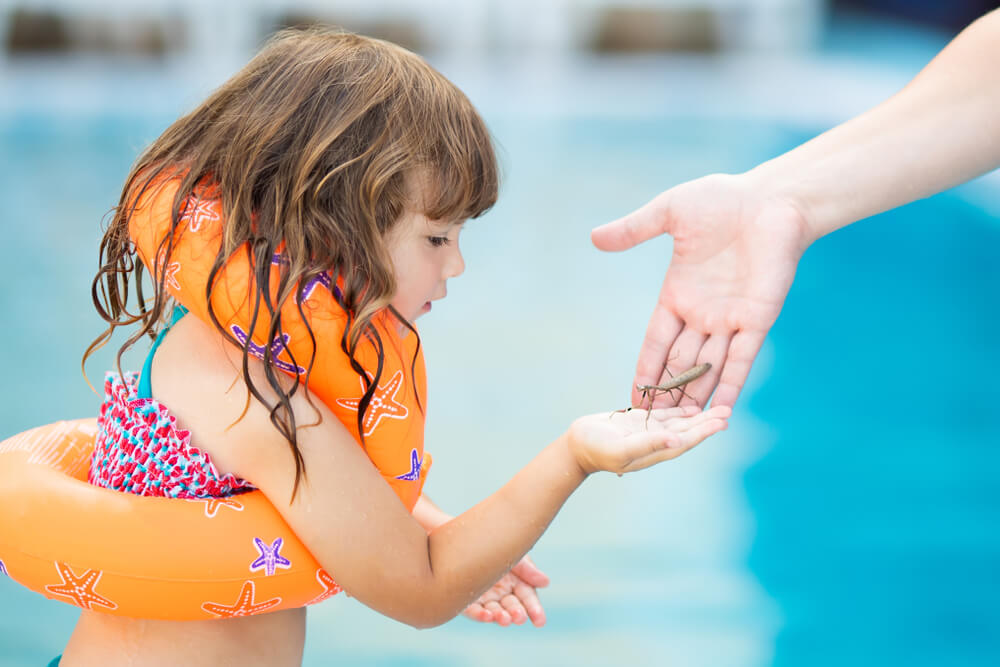
Alina Demidenko/Shutterstock.com
When anxiety disorders like insectophobia are severe, parents may need to seek outside help to deal with the problem. If the phobia is having a major impact on your child’s normal activities and behaviors, then therapy is probably your best bet.
Cognitive Behavioral Therapy
One of the most common types of therapy used to treat insectophobia is cognitive-behavioral therapy or CBT for short. In CBT, therapists ask patients to examine their fears as well as their general thoughts and beliefs about bugs. By learning to think differently about insects, patients can take a more rational approach to the risks of being around them.
Exposure Therapy
Exposure therapy is very effective in treating entomophobia. However, it can be an uncomfortable experience for children and even adults. With exposure therapy, the therapist encourages the patient to interact with insects while tolerating the resulting fear and anxiety.
Exposure therapy may start small with patients being in the same room with an insect that they fear. It may progress to more fearful situations such as allowing an insect to crawl on the patient’s arm, for example. Patients may need to be exposed to bugs on numerous different occasions before they can successfully overcome entomophobia.
Why Killing Insects Isn’t the Answer
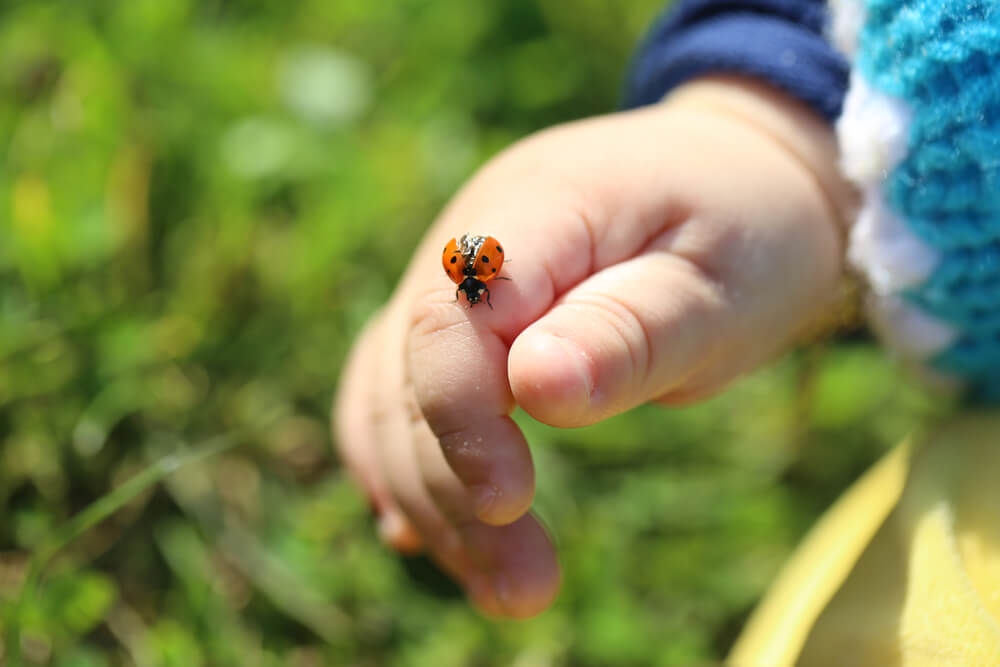
Vankara/Shutterstock.com
If you or your child suffers from entomophobia, you might think the solution is to simply kill all of the insects you can find. However, a show of force is not the solution here.
First of all, it’s not practical. There are billions upon billions of bugs in the world, and it’s impossible to kill them all.
Even if you could eliminate all bugs from the earth, it wouldn’t solve the issue. Since insectophobia is an anxiety disorder, your child’s fear would likely persist anyway.
More importantly, we need insects for a variety of different reasons. They pollinate many of the fruits and vegetables we consume, for example. They also contribute to the balance of nature by eliminating other types of pests and providing feed for reptiles, birds, and other animals.
Teaching your children about the advantages of having bugs around may alleviate their fears to a certain extent. Still, you will need to practice patience. Change takes time, especially when it comes to our belief systems and fear responses!
Forming Support Systems for Entomophobia and Other Anxiety Disorders
Whether it’s you or your child who has a fear of bugs, it’s important to get support from friends, family members, or others with insectophobia. One of the most reassuring things to learn about this and other types of phobias is that you are not alone. There are many other adults and children who have the same anxieties that you do!
Something as simple as sharing this article on social media with your circle of friends can turn into a lifeline of support for your family. Whatever you do, don’t suffer in silence!
The picture on the front page: frantic00/Shutterstock.com.
Проверьте электронный ящик



















